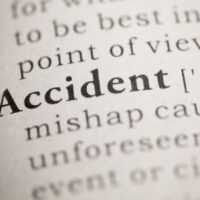How Much Money Can I Get for a Car Crash?

Car crash settlement amounts usually begin with direct economic losses, which is usually a combination of medical bills, lost wages, and property damage. These losses normally exceed $40,000 in a serious injury case. Car crashes usually cause indirect economic losses as well, such as the lost emotional value of the family car.
Noneconomic losses, such as pain and suffering, are more difficult to calculate. Usually, a Carlsbad auto accident lawyer initially asks for about three times the economic losses, depending on the evidence in the case, the applicable legal doctrines, and a few other factors, such as the insurance company’s willingness to settle. We’ll examine some of these legal doctrines in this post.
Negligence
Quite simply, negligence is a lack of care. This legal principle is based on a moral principle. The Good Samaritan went out of his way to help an injured traveler. In the same way, motorists must go out of their way to avoid car crashes. At a minimum, they must be at their best (well-rested, sober, etc.) before they get behind the wheel. Then, they must drive defensively.
Driver error causes over 90 percent of the car crashes in San Diego County. Usually, this driver error is one of the following:
- Ordinary Negligence: Operator impairment, such as alcohol intoxication, and aggressive driving, such as speeding, breach the aforementioned duty of care. If that breach substantially causes injury, a Carlsbad personal injury lawyer can obtain the compensation outlined above.
- Negligence Per Se: Frequently, the written law, not a general legal principle, establishes the standard of care. Traffic tickets, like speeding tickets, reckless driving, and DUI, are the best examples. If a tortfeasor (negligent driver) violated a safety law, and that violation substantially caused injury, the victim could be entitled to compensation as a matter of law.
Bad roads, severe weather, and defective products cause the other 10 percent of the vehicle collisions in California.
Frequently, driver error and other causes overlap. Speeding in the rain is a good example. In such cases, news reporters often state that the bad weather “caused” the crash. However, legally speaking, bad weather contributed to the crash. Driver error substantially caused it.
Negligence Defenses
A lack of evidence and comparative fault are the two most common obstacles to maximum compensation in car crash cases.
The burden of proof in a negligence claim is a preponderance of the evidence (more likely than not). Therefore, a little evidence goes a long way. However, an attorney must diligently collect evidence before filing a court case. Lawyers who take shortcuts during the pretrial process usually obtain very poor results.
Comparative fault essentially shifts blame for an accident from a tortfeasor (negligent driver) to an accident victim.
We mentioned the two kinds of negligence (ordinary negligence and negligence per se) above. If both drivers were negligent and therefore partially at fault for the wreck, jurors must proportionally divide responsibility (e.g. 50-50) based on the evidence.
California is a pure comparative fault state. A tortfeasor must pay compensation even if the victim was 99 percent responsible for the wreck.
Evidence is the key to blunting the comparative fault defense, at least in most cases. If a victim was speeding 10mph over the limit, most jurors would say that excessive speed didn’t substantially cause the crash.
Connect With a Thorough San Diego County Lawyer
Injury victims are entitled to substantial compensation. For a confidential consultation with an experienced personal injury lawyer in Carlsbad, contact the Pursley Law Firm. Virtual, home, and hospital visits are available.
Source:
injuryfacts.nsc.org/all-injuries/costs/guide-to-calculating-costs/data-details/

